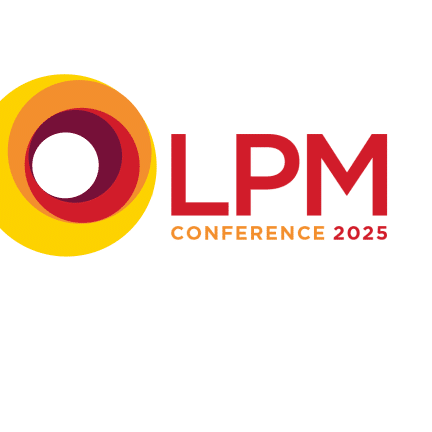
A peek into portals
As a form of client-lawyer communication and collaboration, portals are widely heralded as the new black. But are they all they’re cracked up to be and what are the potential pitfalls? Lucy Trevelyan talks to SME firms that use them.
Client portals are online spaces where case information can be securely uploaded and shared with a client. Accessible through a secure entry point, they allow clients to review the progress of their case and communicate with their lawyers when they choose, thus helping to satisfy increasing demands for transparency.
LPM Frontiers research reveals that a growing share of SME law firms are recognising the value of client portals, with respondents viewing them as by far the most important technology for boosting competitiveness in the SME legal space. But how do they work in practice? LPM has asked five law firms to share their experiences.
Stratford Solicitors
Three-quarters of Stratford Solicitors’ property-related communications are managed through a cloud-based platform called QMP, which enables bespoke client onboarding and collaborative conveyancing transactions between the firm, estate agents, mortgage brokers and the property purchaser.
It was clear that QMP would change the way the firm manages conveyancing transactions dramatically, says managing director, Nick Stratford. “The portal has been tailored to meet the precise needs of our team and the other parties who use it. We have quarterly meetings to discuss which elements could be tweaked or improved. I don’t believe we would get that level of service from many portal providers.”
The portal immediately sped up conveyancing transactions, enabling it to take on more work, thereby increasing its profits, he says. “It’s consolidated our relationship with our referral partners, our clients are happier because they can see what is going on regarding their transactions and don’t have to waste time chasing us, and the buy-in from staff was immediate once they saw a demo of QMP. The portal also makes it simple to understand the different areas of responsibilities in the conveyancing process so there is complete visibility for all parties.”
In addition, it makes the conveyancing process transparent to all involved, so those who are authorised can log on and check the progress of a transaction at any time. Stratford continues: “I can log in and see which transactions are progressing as expected, and identify any that need extra attention from my team. It has streamlined our workload and made us more efficient. Our peers love it too. Estate agents and their clients no longer need to wait for us to update them and it brings mortgage brokers into the loop so they can produce accurate quotations and better forecast when transactions are likely to be complete.”
Ensuring the portal integrated with the firm’s existing case management system (CMS) was an early challenge, he says – which the provider supported very well: “They went direct to the CMS provider and worked collaboratively to achieve what we needed. We were up and running within a couple of months, with the added benefit that both companies can now market their joint integration to more potential clients.”
The biggest concern for the firms and clients was data security and compliance. “Insurers also want us all to have Cyber accreditation, so it is something we look for in every portal we consider. If we don’t know where the data will be stored or how it will be protected, it is an immediate red flag. QMP has Cyber Essentials Plus and provides a proven evidence trail of source of funds for SRA compliance. We were therefore confident it was safe for us, our peers and our clients.
“If more portal companies invested time in working closely with the end user, we could have a lot more successful products on the market,” he says. “But that does take commitment at both ends of the relationship – law firms have got to be open to talking to providers about the products they need and what could work for them. It’s paid dividends for us working collaboratively with the service provider to bespoke QMP to our firm and they have done it all at their own cost.”
Johnson Law Group
All of Johnson Law Group’s (JLG’s) clients have access to their own unique portal login to communicate with the firm, upload any documents and receive notifications. As at Stratford, it’s fully integrated within the firm’s CMS and there haven’t been any obstacles, says managing director, Jamie Patton.
His firm is continually stress testing the security of its systems and embracing any new ways of protecting client data, he says – it is currently looking to enable access for clients through a bespoke app: “Through this they will be able to identify the progress of their case easily through infographic milestone plans, regularly updated through push notifications.”
The portal has definitely helped client experience and the overall competitiveness of the firm, but it is not an absolute solution for achieving high levels of client engagement, he says. “It doesn’t enable you to forget other, more traditional methods of communicating with clients such as by email and on the phone.”
But there is definitely room for improvement in the products currently on offer, he suggests. “Products on the market are either not innovative enough, or the companies leading in this space are too expensive and lack transparency in their pricing. It’s a developing area of the market that could explode in coming years – especially for those who offer a more cost-effective and transparent methodology.”
Lewis Denley
Lewis Denley is currently testing a portal that is part of its CMS, having tried third-party portals in the past with no success, says co-managing partner, Colin Secomb. “We stopped using portals previously due to the lack of full integration with our CMS. Frustration was experienced by both staff and clients, where the portal did not operate effectively in passing and receiving information. Issues arose with security credentials and the look and feel of the portal didn’t match the firm’s branding.”
Off-the-shelf portals often claim to integrate with the CMS, but there is often substantial time, effort and cost involved in building these integrations, he says. “Unless a third-party portal is specifically built to integrate with a particular business system, there is always an element of fragmentation. Any changes to the data and information structure in business systems can quickly interrupt the integration and hinder the use of the portal.”
The firm’s real estate team has more use for documents being handled through a portal than other areas, but every department could use portals to reduce the flood of emails and enhance security when sending and receiving documents, he adds. “Both staff and clients can see the benefit of portals. It results in a quicker and more effective overall service. The convenience of being able to share and receive correspondence through digital means is appreciated by all but a rare minority of clients.”
For a portal to provide optimal value, it must allow fluid transfer of data and correspondence, he says. “Bought-in/third-party portals can’t truly be developed for one particular software integration. Therefore the need for them to attempt to fit with multiple systems will inevitably leave some fragmentation in the depth of the integration. Software systems such as the CMSs that have their own portal offer a more fluid and effective means to share information. This allows a firm to be comfortable and confident about the effectiveness of that portal and software combination as the technology advances and the firm moves towards a more digital future.”
The CMS the firm now uses is developing an in-built portal which does not rely on third-party software. This will provide unfettered access to, and control of, all data within the system, which can be effectively passed to and from the CMS through the portal, he says.
“This eliminates the concern of interruption when the case management software is updated, automates all passing and sharing of data, and uses the CMS’s security protocols, including two-factor authentication, through details securely stored within the CMS. These features have eliminated the potential issues with third-party portals, and have saved the firm considerable time and cost.”
Portals have proved to be a more secure approach to client correspondence than emails, and a much quicker alternative to corresponding by post, says Secomb. “That said, security challenges must always be carefully considered, especially when using third-party software. Data may be more vulnerable to being hacked. GDPR must be carefully considered, as well as the potential for incorrect sharing of privileged information and documents.”
He agrees there is, without a doubt, room for improvement in the products on offer in the market. “Better integration capabilities are required for third-party portals, along with more user-customisable functionality so law firms can use portals in a way tailored to their way of working. Basics like multi-factor authentication, mobile accessibility and user-friendliness can be improved in most portal products on the market. Any CMS which has its own built-in portal is likely to be the most effective solution, provided the product is innovative and determined in its drive to innovate and stay in front of digital evolution and security protocols.”
Glaisyers ETL
A small share, around 10%, of Glaisyers ETL’s communications are managed through portals, with all practice areas sharing their initial client onboarding documentation this way using a solution called . This means the client can respond and sign their engagement documents.
The firm had explored a traditional portal – where clients would be able to log in and view a collection of documents across one or more matters – in a recent trial with its case management supplier. But the rollout wan’t successful, according to projects and business solutions manager Sean Edwards.
“The pilot highlighted that with solutions like this, SMEs like ourselves are often left at the mercy of the supplier’s active development. As a result, our focus needs to be on a product in the legal market that we know is moving forward, and where the quality of the service reflects this innovative approach,” he says.
There’s a careful balance that must be found when imposing solutions like this on clients, he warns. “You have to ask, ‘are clients asking us for this service? Has a client highlighted that they would choose another law firm because we don’t offer this service?’ The answer to those questions currently has been ‘no’. However, that doesn’t mean the offering isn’t explored in greater detail.”
Sometimes it’s a hard-sell if the matter isn’t document-heavy, he adds. “For the one-off document review, it’s hard to beat the single email. For matters that are larger in scope – for example, a document-heavy corporate data room or a set of property plot sales – we must always ask how we could provide a better service to our client. Is the client someone who would engage with a data-room service? If so, the offering is one that’s sought after from both sides, and that’s the key to success with these products.”
Integration with other business systems is where you face a double-edged sword with the solutions on the market available to SMEs, he says. “With some larger solutions, there isn’t direct integration with our CMS and we have to upload items to make them available to the client. This can sometimes lead to a disconnect between what’s displayed on the matter internally and in the data room externally. For systems that do integrate with our CMS, they often don’t have the usability or functionality of a product such as HighQ. In most instances, they are just a log-on to click and view or download documents. If the volume isn’t there, it doesn’t really provide a better use case to either side.”
By onboarding such a solution, he says, a firm can also open up a host of vulnerabilities. “You are at the mercy of how your clients interact with the service, where it’s hosted, and with the data in terms of timelines and GDPR considerations. It becomes something else you must monitor.”
But for clients that are instructing more than 100 matters a year, it’s a solution that is sought after, he says. “If you’re not supplying this for those clients, someone else will. It’s at this stage that you need to be providing a tool which helps clients understand their return on investment using your product. Portals that naturally integrate with and enhance the Microsoft 365 offerings are the ones that will stand the test of time. Standalones already have a shelf-life that has been met.”
First4InjuryClaims
First4InjuryClaims uses a secure online tool called Touchpoint, which is part of the firm’s CMS. Clients can choose to use a portal for certain aspects of their claim, such as to approve and sign documents, or upload evidence such as photographs of an accident scene or receipts for their losses.
“We’ve found it a very accessible and efficient process,” says head of legal Andrew Wild. “We use the same CMS for all our operational and financial needs, so there have been no issues with integration. We recruited a new team, which was trained in the technology we use from day one. Clients nowadays are much happier using technology – and they see the benefits it brings, namely enabling us to progress their claims more quickly, which makes the buy-in quite straightforward.”
The firm is now looking at adding two-way messaging to its system, although this isn’t an area where he sees big demand with the work the firm does: “We update clients via SMS and email when there is a development with their claim, and that meets our client’s expectations. The nature of road traffic accidents means clients usually haven’t been through the process before, they are vulnerable, and often want to speak to someone on a call, as opposed to online. Most still value the human touch.”
As the experiences outlined by these firms illustrate, a client portal can be a veritable boon for a law firm if you find one that can be integrated seamlessly with your current business systems, is intuitive and easily accessible, is understood by clients and staff, and where you can be confident your data is secure.
But it seems they aren’t a complete panacea. If you bring in the wrong one, they could cause more problems than they solve. Care must therefore be taken in choosing a system that works for your firm. Key issues to consider are:
- Before you buy, decide what you want to use it for and then make sure it has all the features you need.
- Double check that the portal will work with your existing systems and that any integration will not be too disruptive for your business.
- Ensure your data will be held securely, that you know where it will be stored, and that communications are encrypted in compliance with rules.
- Give clients and employees plenty of notice of the launch. Explain all the benefits the portal will bring and provide early and regular training on its use.
- Make sure you have someone ready to step in if things go wrong.



